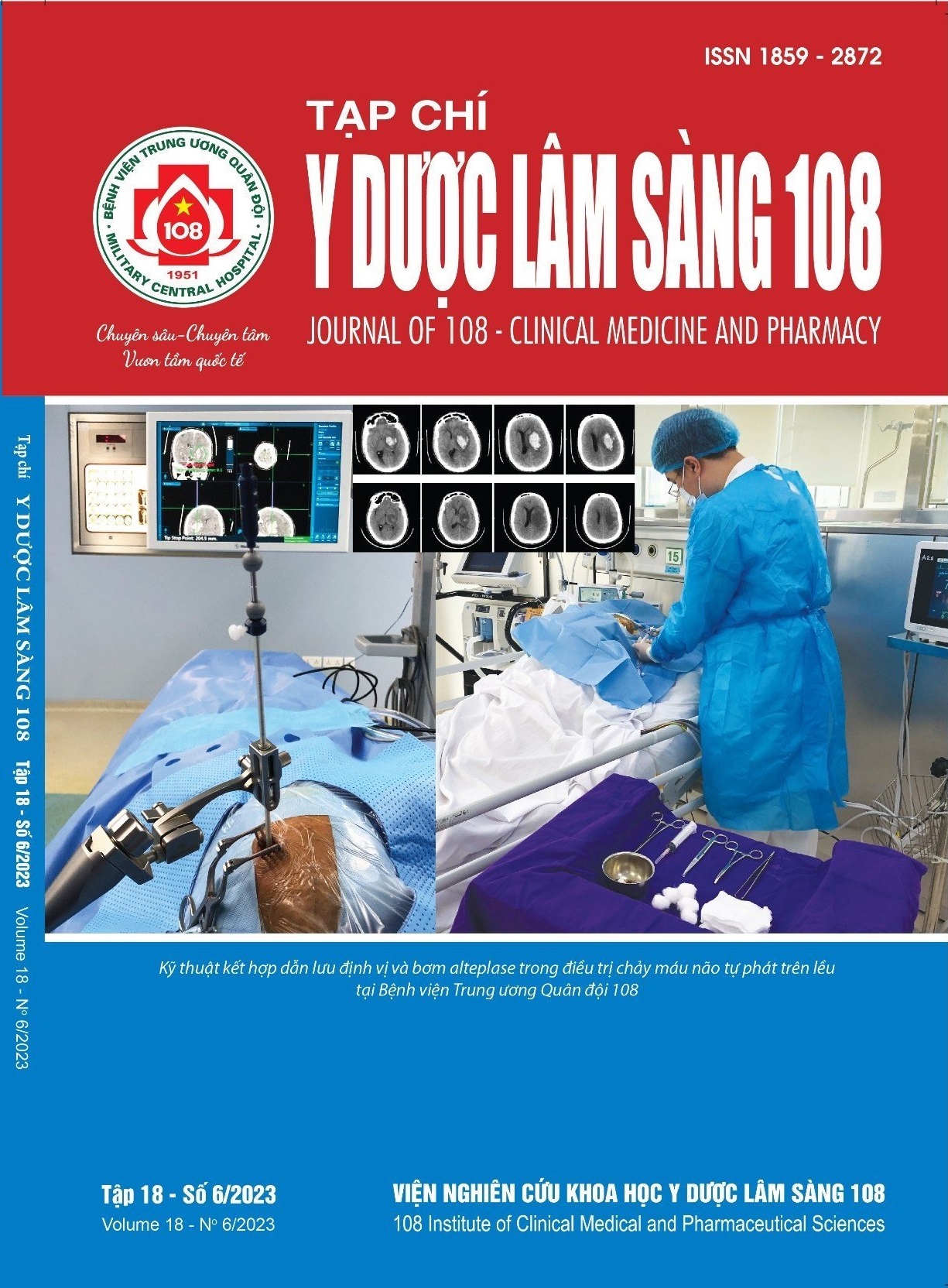Evaluating the results of endoscopic retrograde cholangio pancreatography management of biliary tract complications after liver transplantion
Main Article Content
Keywords
Abstract
Objective: To evaluate the results of endoscopic retrograde cholangiopancreatography in the treatment of biliary tract complications after liver transplantation at 108 Military Central Hospital. Subject and method: Subjects were patients with biliary tract complications after liver transplantation at 108 Military Central Hospital. Retrospective, cross-sectional descriptive study to assess outcomes, complications of endoscopic retrograde cholangiopancreatography. Result: Within 3 years from 2019 to 2022, there were 110 patients with liver transplant patients from living-donors, in which the rate of biliary complications was 27.7%, biliary stricture was the most common complication, accounting for 19.1%. Technical success rate up to 96%, complication rate after intervention was 20.8%, no case of death. Combination balloon dilatation and stent placement was the most commonly used method, accounting for 62.5%. Plastic stents were used more than metal stents (75% vs 25%). Some common difficulties: Difficult scope intubation (45.8%), stricture negotiation (33.3%). 20.8% of patients had complications after the intervention, in which infectious complications were the most common (12.5%), There were no deaths. Conclusion: Endoscopic management of patients with biliary complications after liver transplantation had a high success rate and low invasiveness. However, the intervention process has many difficulties and complications, so it is necessary to have a reasonable intervention strategy, variety of specialized instruments and experienced specialists.
Article Details
References
2. Boeva I, Karagyozov PI, Tishkov I (2021) Post-liver transplant biliary complications: Current knowledge and therapeutic advances. World J Hepatol 13(1): 66-79.
3. Tabibian JH, Asham EH, Han S et al (2010) Endoscopic treatment of postorthotopic liver transplantation anastomotic biliary strictures with maximal stent therapy (with video). Gastrointest Endosc 71: 505.
4. Tashiro H, Itamoto T, Sasaki T, Ohdan H, Fudaba Y, Amano H, Fukuda S, Nakahara H, Ishiyama K, Ohshita A, Kohashi T, Mitsuta H, Chayama K, Asahara T (2007) Biliary complications after duct-to-duct biliary reconstruction in living-donor liver transplantation: Causes and treatment. World J Surg 31: 2222-2229.
5. Maria C Londoño, Domingo Balderramo, Andrés Cárdenas (2008) Management of biliary complications after orthotopic liver transplantation: The role of endoscopy. World J Gastroenterol 14(4): 493-497.
6. Thomas Zoepf and at al (2006) Balloon dilatation vs. balloon dilatation plus bile duct endoprostheses for treatment of anastomotic biliary strictures after liver transplantation. Liver Transpl 12(1): 88-94.
7. Hsieh TH, Mekeel KL, Crowell MD et al (2013) Endoscopic treatment of anastomotic biliary strictures after living donor liver transplantation: outcomes after maximal stent therapy. Gastrointest Endosc 77: 47-54.
8. Lim CH, Shih KL, Wu SS et al (2020) Safety of endoscopic retrograde cholangiopancreatography in liver transplanted patients: A single-center retrospective study. Advances in Digestive Medicine 7: 9-13.
 ISSN: 1859 - 2872
ISSN: 1859 - 2872
